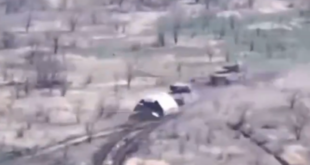ANRA Technologies is now a consortium partner for a United Kingdom (UK) based project called BLUEPRINT that recently achieved a significant milestone. In collaboration with Cranfield Airport Operations Limited, Project BLUEPRINT has been selected to take part in the UK Civil Aviation Authority (CAA) Temporary Reserved Area (TRA) Regulatory Sandbox, which will allow ANRA to work closely with the subject matter experts within the CAA to progress towards objectives of successfully trialing integrated BVLOS (Beyond Visual Line of Sight) drone operations within UK airspace. The sandbox is coordinated by the CAA’s Innovation Advisory Service.
The aims of the Sandbox are to:
- Demonstrate and validate specific technologies, airspace management procedures, and flight operation procedures needed to enable the safe, efficient, and managed integration of BVLOS drone operations and crewed aircraft.
- Enable the CAA to validate the use of the airspace policy concept with real-world use cases to evidence how it supports and enables the accommodation phase of integrated operations within a Temporary Reserved Area (i.e., accommodation phase).
- Through the TRA, enable participants to scale beyond segregation towards integration of BVLOS drone flights with crewed aircraft (i.e., integration phase).
ANRA’s Project BLUEPRINT focus is effective Air Traffic Management (ATM), UAS Traffic Management (UTM) and digital communication systems. ANRA’s approach is to build an interconnected ecosystem of technologies connected in an open and standardized way. This will be developed for both controlled and uncontrolled airspace and the interface between them, using the airspace around Cranfield Airport as a testbed. ANRA will develop an Air Traffic Control user application to meet the strategic and tactical information requirements to support drone operations.
About Project BLUEPRINT
Project BLUEPRINT was one of the winning consortium projects of the UK Research & Innovation Future Flight Challenge Phase 3. The team is led by Neuron Innovations and includes Ebeni, Cranfield Airport, Cranfield University, University of Southampton, Drone Cloud, Anra Technologies, Sky-Drones, Distributed Avionics and Future Aerial Innovations.
The aim of project BLUEPRINT is to provide regulators, technology providers and operators with a “blueprint” for the UK-wide rollout of BVLOS drone operations, which can be commercialized at scale. The blueprint will allow stakeholders to design, plan and build routine and persistent BVLOS drone capabilities that can be exported on a European level. Project Blueprint is working with Cranfield Airport, the CAA and other TRA Sandbox partners to develop a TRA BVLOS test environment at Cranfield Airport, which will enable drones and crewed aircraft to co-exist in a safe and efficient operating environment through the:
- Deployment of a low-cost ground-based detect and avoid network,
- Development and integration of open-access UTM (UAS (Unmanned Aircraft Systems) Traffic Management) architecture into Cranfield Airport,
- Production of six BLUEPRINTs to scale this concept of drone zone operation across the UK; applicable to specific category drone operations, both multi-rotor, single rotor and fixed-wing drones up to approximately 500kg.
The project intends to complete research & development flights within the TRA to reflect the rotary and fixed-wing use cases and related end-user benefits during the sandbox. This is to provide evidence to the regulator on the safety of ADS-B enabled BVLOS flight operations within TRA and aims to validate that ADS-B TRAs (Temporary Reserved Area) are effective in integrating all airspace users safely.
BLUEPRINT and the TRA Sandbox
The TRA will enable the live operational testing of operations and technology and will help validate safety risk-mitigating evidence and identified standards, and which will enable the CAA to influence regulatory guidelines and acceptable means of compliance (AMC). These can be aligned with other TRA Sandbox users to ensure an increased set of test data and, therefore, improved validation. In turn, this improves the opportunity to increase the scale of integrated BVLOS sustainability by enabling regulatory guidance through trialing and testing. By flying within a TRA Sandbox, this will help BLUEPRINT to:
- trial the airspace that has been developed to determine whether this provides inclusivity to all airspace users
- learn from the trial operations and develop effective governance to manage aviation stakeholders
- test and trial the detect and avoid solution that has been developed, make observations, and determine lessons learned
- test the integration and success of a UTM minimum viable product
- safely integrate two use case drones within an airport environment
 Unmanned Aerial Vehicle The latest drone news
Unmanned Aerial Vehicle The latest drone news



